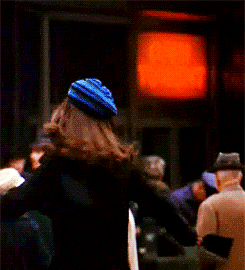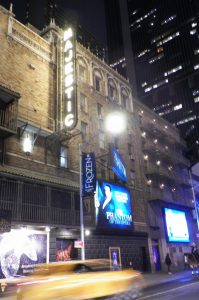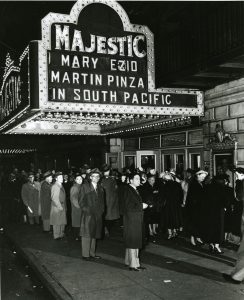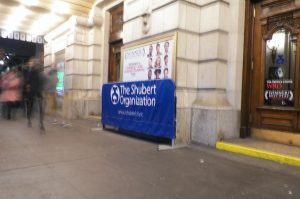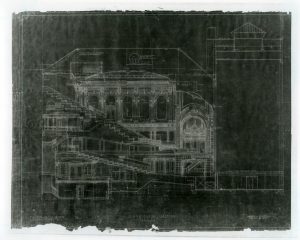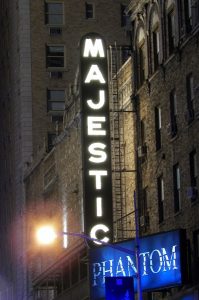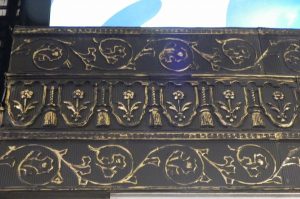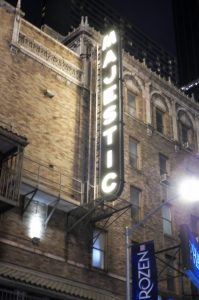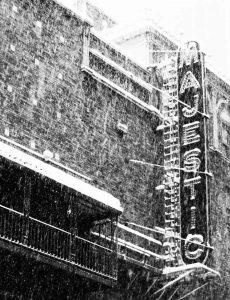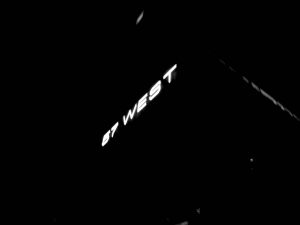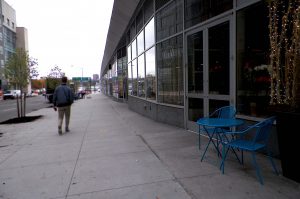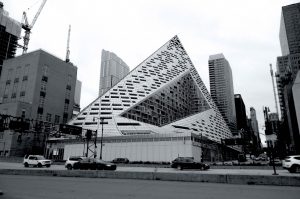by Robine Jean-Pierre

courtesy of Wikimedia Commons
Last week, City Tech put on a play called “The Final Reel,” directed by Mark Lonergan and produced by Parallel Exit, in the Voorhees Theater. I was personally invested in the show, since our professor, John Huntington, had us participate in the load-in and other technical aspects of pre-production. We helped out in both my Technical Production and Sound Systems classes. I heard a lot of good about it but had no idea what to expect.
Here is the blurb from the City Tech Theatreworks website:
“The Final Reel is inspired by the iconic films Sherlock Jr and The purple Rose of Cairo. An eccentric historian discovers the holy grail of silent films: the final reel of a forgotten classic thought to be lost to history. As he presents the film for the first time in a hundred years, his bumbling assistant accidentally steps into the movie and falls in love with the heroine. The two-love birds step back into the modern world and the heroine is left to make a fateful decision – one that changes every night of performance with the help of the audience.”
Watching the rehearsal that afternoon, hours before opening night, was definitely a rewarding experience. I was fascinated by the technological creativity, the excellent acting, and the hilarious plot, with humor reminiscent of classic shows like Tom and Jerry. To top it all, what I did not expect was a deeper underlying theme that unearthed itself toward the end: women empowerment.
Perhaps what no one is expecting is that this aforementioned heroine happens to be the real Penny, the actress and playwright straight out of the film from one hundred years ago! She explains that it had all been a part of her plan to escape her own era, and “time travel” to one in which women would finally be recognized for their full potential and talent. It worked and now, here she is, in New York in 2018, where that dream could finally come true.
The “bumbling assistant” mentioned in the blurb earlier introduces her to the crowd (us in the audience), to which she feistily replies, more or less, “I don’t need an introduction, bucko. I can introduce myself, thank you very much.” It is hilarious and somewhat gratifying to realize just how bold, loud and sassy she is in real life–especially after having observed her charming, gentle and submissive demeanor when she was still in the silent film. Her “true colors” certainly were not expected of a woman during her time.
She explains that, as an actress and playwright, she had been marginalized and objectified by the men of her day. She was often treated like a doll rather than a dignified professional. Now she has the authority to write her own plays, act her own character, and fully put her talent to use, without any glass ceilings over her head. And her love interest will be her assistant, waiting on and submitting to her (willingly) rather than the other way around. The Voorhees Theater would not have to be closed after all.
I appreciate the fact that, although the play was quite lighthearted and comical, it presented us with a talented and intelligent woman who took herself seriously and earned everyone’s respect. And what better time to put this play on than in March? Happy Women’s History Month!

